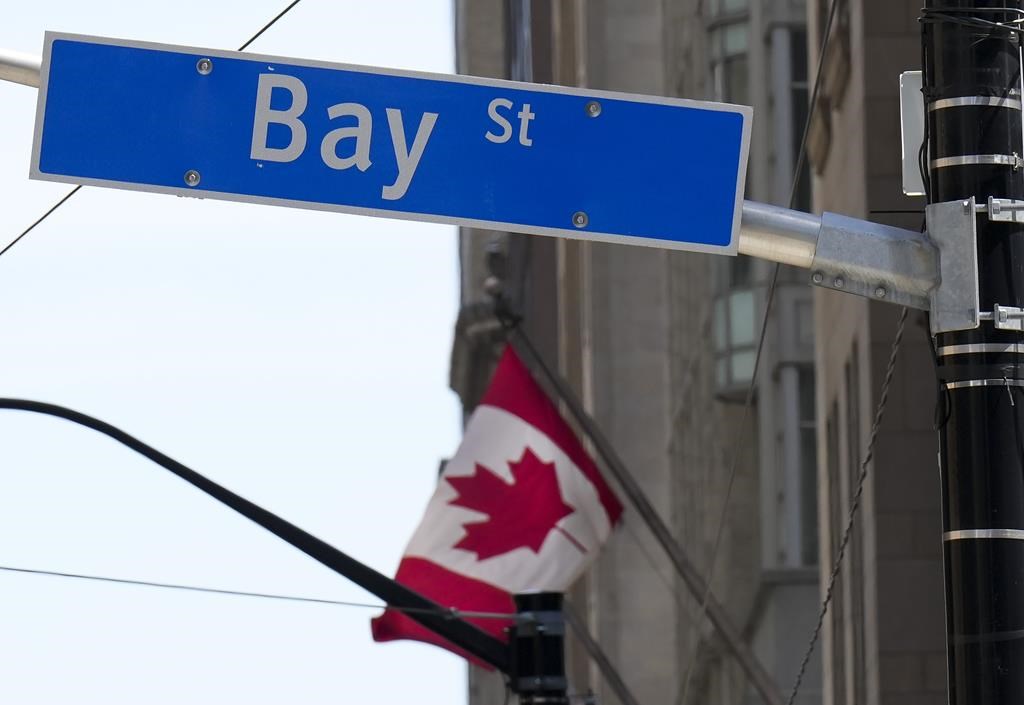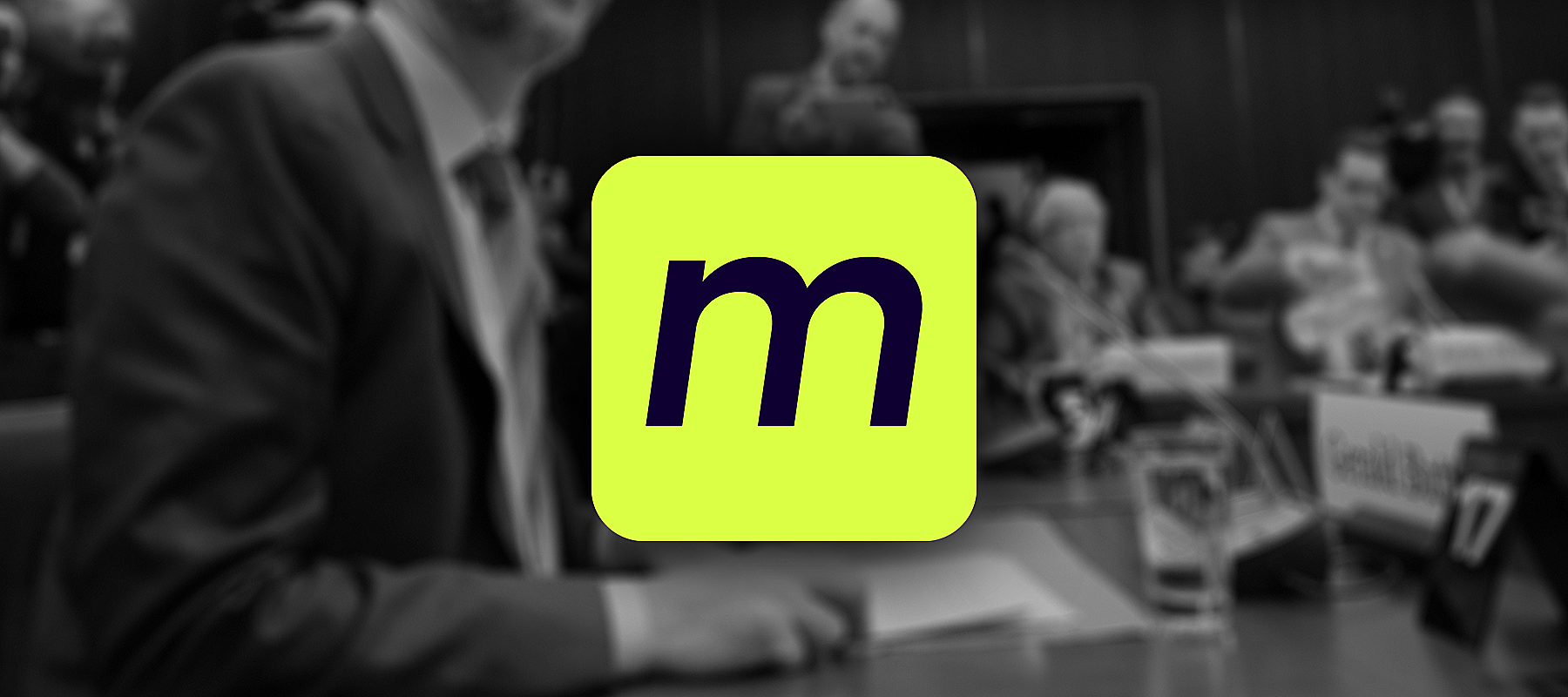Best Canadian ETFs of April 2024
Fact Checked: Amy Tokic
Updated: April 15, 2024
We’ve gathered a list of the best ETFs in Canada to consider ahead of a looming recession, mild or not.
To help navigate early 2024's volatile economic climate, here's our list of the best Canadian ETFs to consider investing in right now.
Economists continue to warn that a recession could hit this year, even as interest rates are slated to level off. And while it’s likely to be a mild one, according to analysts such as Sal D’Angelo at Vanguard Canada, it’s causing some concerns about investments.
To adjust, D’Angelo recommends going back to basics ahead of a recession, especially when it comes to exchange-traded funds (ETF). Read on to learn more about the best Canadian ETF candidates and why we've got them on our list.
Best Canadian ETFs to consider right now
BMO Monthly Income ETF (ZMI)
TD Q Canadian Dividend ETF (TQCD)
iShares Core MSCI Canadian Quality Dividend Index ETF (XDIV)
Vanguard Global Aggregate Bond Index ETF (VGAB)
iShares Core Canadian Universe Bond ETF (XBB)
TD Canadian Aggregate Bond Index ETF (TDB)
Vanguard FTSE Developed All Cap ex North America Index ETF (VIU)
TD International Equity Index ETF (TPE)
BMO Low Volatility Canadian Equity ETF (ZLB)
iShares MSCI Minimum Volatility USA Index ETF (XMU)
Since becoming available in 2011, Canadian investors looking to gain access to the market have opted for ETFs. They’ve allowed investors to build low-cost portfolios diversified in both assets and countries.
According to a January 2023 Mackenzie Investments survey, Canadians collectively invested $35 billion in ETFs in 2022. In total, there are now $314 billion in ETFs.
These ETFs are designated for Canadian investors at different stages of life, whether you are kicking off your career or nearing retirement. If you make a move, choose a trading platform with low fees, such as CIBC's Investor's Edge.
Buy your first ETF with one of Canada's top online brokerages
| CIBC Investor's Edge review | Questrade review | Wealthsimple review |
|---|---|---|
-1709134607.svg) |
 |
 |
|
◦ In-depth research to boost your investment knowledge.
◦ Investment options for every investor, no matter what your financial goals are. ◦ Under 25? Trade for free. |
◦ Buy any North American-listed ETF, including crypto ETFs, commission-free.
◦ No maximum on the amount of free ETFs you can buy. ◦ No minimum investment amount required on ETF orders. |
◦ No account minimums
◦ $0 commission ETF trading ◦ Reinvest dividends automatically |
| Buy your ETF | Buy your ETF | Buy your ETF |
How to evaluate and choose the best Canadian ETFs
When evaluating the best Canadian ETFs (Exchange-Traded Funds), it's important to consider a range of factors to ensure that the ETF aligns with your investment goals, risk tolerance, and financial strategy.
Here are the top three aspects to consider:
- Expense Ratio and Fees: Similar to evaluating online brokers, the cost is a critical factor for ETFs. The expense ratio, which is the annual fee expressed as a percentage of the fund's average assets, directly impacts your returns. Lower expense ratios are generally preferable, as high fees can significantly erode long-term investment gains. Additionally, look out for other fees such as trading costs or any management fees that might be associated with the ETF.
- Portfolio Composition and Diversification: Understanding what is inside the ETF is crucial. Assess the sectors, industries, and geographic regions the ETF invests in, and ensure they align with your investment goals and risk tolerance. Diversification is key in reducing risk; hence, an ETF that holds a wide variety of assets (stocks across different sectors, bonds, international securities, etc.) can help spread risk. For sector-specific or thematic ETFs, ensure that the focus aligns with your investment thesis.
- Performance Track Record and Fund Size: Look at the historical performance of the ETF over different time horizons, such as 1-year, 3-year, and 5-year periods. While past performance is not indicative of future results, it can provide insights into how the fund has navigated different market conditions. Additionally, consider the fund size (assets under management). Larger ETFs often have better liquidity, making it easier to buy and sell shares. However, smaller ETFs may offer unique opportunities but could come with higher risk.
BMO Monthly Income ETF (ZMI)
Canadians are wading through a lot of uncertainty, which is why there has been so much interest in fixed income ETFs, says Erin Allen, vice president for ETF online distribution for BMO Global Asset Management.
The BMO Monthly Income ETF has a fixed income that comes from bonds, dividend ETFs and covered call ETFs, adding in corporate bonds as well.
Invest in ETFsTD Q Canadian Dividend ETF (TQCD)
For those worried about fixed income, the TD Q Canadian Dividend ETF might be an excellent option.
With a distribution yield at 3.87% at the time of writing, the ETF focuses on companies that provide dividend growth, as well as long-term profitability. It invests primarily in Canada, with a mix of sectors including financial services, energy, basic materials, industrial services and telecoms.
Jonathan Needham, Vice President of ETF Distribution for TD Asset Management anticipates that this Canadian-focused ETF may outperform other dividend equities in 2023.
Invest in ETFsiShares Core MSCI Canadian Quality Dividend Index ETF (XDIV)
Due to inflation, 2023 was particularly hard on retirees who need fixed income as part of their regular income stream.
Investors in this scenario could turn to the iShares Core MSCI Canadian Quality Dividend Index ETF, which offers a defensive position and consistent income.
“We see investors pivot to a more defensive stance,” said Helen Hayes, head of iShares Canada at BlackRock.
Invest in ETFsVanguard Global Aggregate Bond Index ETF (VGAB)
Now of course if you’re considering fixed income, we need to talk about bond ETFs. Bonds had a bad year in 2023, as interest rates climbed. But experts across the board are saying that “bonds are back,” especially with a long-term investment strategy in mind.
If you are in it for the long haul, Vanguard Global Aggregate Bond Index ETF is a good option. With a benchmark of 25,000 bonds, the ETF covers whole global bonds, with an average maturity of 10 years.
D’Angelo sees the benefit of using a long-term investment strategy this year.
“None of our views are tactical in nature, with more of a 10-year outlook,” D’Angelo said. “Having said that, what we’ll propose will work really well next year as we’re forecasting a recession.”
Buy ETFsiShares Core Canadian Universe Bond ETF (XBB)
A potential recession creates more risk for investors. That’s why another timely recommendation for 2024 is iShares Core Canadian Universe Bond ETF. Here you get an ETF with a Silver rating for its diversified exposure to Canadian bonds.
Bryan Armour, Director of Passive Strategies Research, North America at Morningstar likes this option for those who have a portfolio full of stocks. That’s because this ETF has an overweight holding of government bonds, which can help balance your portfolio.
Buy ETFsTD Canadian Aggregate Bond Index ETF (TDB)
With so many unknowns on the horizon many investors are looking to stick with a defensive investment strategy in 2023. The TD Canadian Aggregate Bond Index ETF will have you covered with 70% investment in government bonds and 30% in corporate bonds. You can look into this ETF using a low cost trading platform today.
The ETF is both conservative and defensive for those wanting to gain back control of their portfolio in the next year.
“With equity markets revised lower it’s a good time to be defensive and capture a good yield if you will,” Needham says.
Buy ETFsVanguard FTSE Developed All Cap Ex North America Index ETF (VIU)
Experts also anticipate that the global market should do well coming out of a recession next year.
The Vanguard FTSE Developed All Cap ex North America Index ETF (VIU) is a solid option, giving you global exposure with 58% in Europe, 40% Pacific and 0.70 in the Middle East.
Buy ETFsTD International Equity Index ETF (TPE)
Canadian investors tend to have a home bias, which is why it can be important to look outside the North American market to broaden your portfolio.
Armour agrees with D’Angelo that the broader market is a great place to be coming out of a recession.
TD International Equity Index ETF is an affordable option that’s made up of 97% international equity.
Invest in ETFsBMO Low Volatility Canadian Equity ETF (ZLB)
For those wanting to add even more conservative protection to their portfolio, the BMO Low Volatility Canadian Equity ETF is a stable option. While you likely won’t see it soar, it probably won’t crash either.
In a rocky market, low volatility is a natural place to look and this ETF gives access to blue-chip companies with relatively steady performance.
“This lower volatility approach to investing is going to be a good theme to run with in 2023 with the market uncertainty,” Needham says.
Invest in ETFsiShares MSCI Minimum Volatility USA Index ETF (XMU)
This challenging environment during the next year is exactly why you might consider a low volatility option. iShares MSCI Minimum Volatility USA Index ETF covers steady sectors such as utilities.
Safety is key going into a recession, Hayes says. Especially after the interest rates and inflation we’ve seen through 2022.
“When we look at the post-pandemic world and all the inflationary shock at the moment…the rate has moved from 0.25% to 4.5% in the span of four months…and the result of that is a sell off,” Hayes says. “Investors should be prepared for a positive real rate environment.”
Buy ETFs with CIBC Investor's EdgeBest ETFs in Canada: Composition
| ETF Name | Ticker | Expense Ratio % | Dividend Yield FWD | Total Holdings | Stocks Exposure | Bonds Exposure |
|---|---|---|---|---|---|---|
| BMO Monthly Income ETF | ZMI | 0.39% | 5.32% | 9 | 57.59% | 34.76% |
| TD Q Canadian Dividend ETF | TQCD | 0.40% | 4.11% | 62 | 99.66% | 0% |
| iShares Core MSCI Canadian Quality Dividend Index ETF | XDIV | 0.11% | 4.68% | 20 | 99.60% | 0% |
| Vanguard Global Aggregate Bond Index ETF | VGAB | 0.20% | 6.79 | 3 | 0% | 99.13% |
| iShares Core Canadian Universe Bond ETF | XBB | 0.10% | 3.12% | 1,506 | 0% | 99.14% |
| TD Canadian Aggregate Bond Index ETF | TDB | 0.00% | 4.83% | 1,329 | 0% | 99.15% |
| Vanguard FTSE Developed All Cap ex North America Index ETF | VIU | 0.00% | 2.90% | 3,903 | 99.81% | 0% |
| TD International Equity Index ETF | TPE | 0.19% | 2.50% | 941 | 99.67% | 0% |
| BMO Low Volatility Canadian Equity ETF | ZLB | 0.35% | 2.87% | 46 | 99.77% | 0.12% |
| iShares MSCI Minimum Volatility USA Index ETF | XMU | 0.00% | 1.36% | 164 | 99.80% | 0% |
Finding the best ETF in Canada
The ETF landscape in Canada seems to improve every year. The most recent addition to the space is a new trend of all-in-one “asset allocation” ETFs. Finally, we have a balanced mutual fund available in ETF form.
These one-ticket ETF solutions eliminate the need to hold multiple funds and take the burden of rebalancing off of investors’ plates.
The beauty of ETFs is that while you can get broad exposure to the entire world with just one fund, you can also drill down into specific sectors such as renewable energy and REITs, or even into specific industries like cryptocurrency and cannabis.
For the purpose of this article, we’ll stick with core “set-it-and-forget-it” ETFs rather than trying to guess which hot new sector or industry will outperform.
How do you put together a list of the best Canadian ETFs? We started with ranking the top ETFs for the Canadian market, the U.S. market, the International market, and the bond market (Canadian and global).
Finally, we looked at the all-in-one ETFs as an efficient way to bring everything together under one fund and then ranked the best.
Best ETFs for Canadian investors
| ETF | Market | MER% | # of holdings | Description |
|---|---|---|---|---|
| Vanguard FTSE Canada All Cap Index ETF (VCN) | Canada | 0.05 | 182 | Provides broad exposure to predominantly Canadian large-, mid- and small-capitalization companies |
| iShares Core S&P U.S. Total Market Index ETF (XUU) | U.S. | 0.07 | 3,627 | Offers broad exposure to U.S. large, mid, small, and micro-capitalized companies through the S&P Total Market Index |
| iShares Core MSCI All Country World ex Canada Index ETF (XAW) | Global, ex-Canada | 0.22 | 9,111 | Captures large, mid and small cap representation across 22 developed markets countries (excluding Canada) and 23 emerging markets countries. |
| BMO Aggregate Bond Index ETF (ZAG) | Canada | 0.09 | 1,366 | A broad measure of the Canadian investment-grade fixed-income market consisting of Federal, Provincial and Corporate bonds. |
| Vanguard Balanced ETF Portfolio (VBAL) | Global | 0.25 | 12,986 stocks, 17,490 bonds | Maintains a long-term strategic asset allocation of global equity (approximately 60%) and fixed income (approximately 40%) securities. |
More details about the best ETFs for Canadian Investors
The top 3 ETFs in Canada (all-in-one ETFs)
These funds have been called one-stop ETFs, one-ticket solutions, asset-allocation ETFs, and balanced ETFs. For the purpose of this article, we’ll call them “All-in-One ETFs”.
Investors have several choices when it comes to all-in-one ETFs. We’ll briefly highlight all of the different options before declaring a winner.
Vanguard ETFs
First up is Vanguard, who arguably changed the game for DIY investors (and put robo-advisors on notice) with the introduction of its line-up of all-in-one ETFs. They include:
- Vanguard Conservative Income ETF Portfolio (VCIP) – 20% equities / 80% bonds
- Vanguard Conservative ETF Portfolio (VCNS) – 40% equities / 60% bonds
- Vanguard Balanced ETF Portfolio (VBAL) – 60% equities / 40% bonds
- Vanguard Growth ETF Portfolio (VGRO) – 80% equities / 20% bonds
- Vanguard All-Equity ETF Portfolio (VEQT) – 100% equities
Each of the above ETFs comes with a low-cost MER of 0.25%
iShares ETFs
Next up is iShares’ asset allocation ETFs:
- iShares Core Income Balanced Portfolio (XINC) – 20% equities / 80% bonds
- iShares Core Conservative Balanced ETF (XCNS) – 40% equities / 60% bonds
- iShares Core Balanced ETF Portfolio (XBAL) – 60% equities / 40% bonds
- iShares Core Growth ETF Portfolio (XGRO) – 80% equities / 20% bonds
- • iShares Core Equity ETF Portfolio (XEQT) – 100% equities
The iShares funds are expected to have an MER of 0.20%.
BMO ETFs
BMO also launched three asset allocation ETFs:
- BMO Conservative ETF (ZCON): 40% equities / 60% bonds
- BMO Balanced ETF (ZBAL): 60% equities / 40% bonds
- BMO Growth ETF (ZGRO): 80% equities / 20% bonds
The three BMO all-in-one ETFs come with an MER of 0.20%.
We initially crowned Vanguard the winner of this category due to the breadth of its offerings for the ultra-conservative to the ultra-aggressive investor, and everything in between. Recently, iShares matched Vanguard’s suite of asset allocation ETFs and now has a similar offering of five funds.
I personally switched my previous two-ETF portfolio, consisting of VCN and VXC, to the new 100% equities all-in-one ETF VEQT.
Personal preferences aside, I stand by my statement that most investors should add bonds to their portfolios to smooth out the ride. For that reason, I’ll highlight the classic 60/40 balanced portfolio – VBAL – as the top all-in-one ETF in Canada.
As “set-it-and-forget-it” as investing gets, VBAL offers instant global diversification with more than 12,000 individual stock holdings and 17,000 individual bond holdings.
- Vanguard US Total Market Index ETF – 24.9%
- Vanguard Canadian Aggregate Bond Index ETF – 23.5%
- Vanguard FTSE Canada All Cap Index ETF – 18.0%
- Vanguard FTSE Developed All Cap ex North America Index ETF – 12.5%
- Vanguard Global ex-US Aggregate Bond Index ETF CAD-hedged – 9.1%
- Vanguard US Aggregate Bond Index ETF CAD-hedged – 7.1%
- Vanguard FTSE Emerging Markets All Cap Index ETF – 4.9%
One area to highlight is the exposure to both U.S. and global bonds, which most investors can’t get in a typical ETF or mutual fund portfolio.
How to invest in ETFs
Now you have a list of the best Canadian ETFs, but how do you go about investing in them? That depends on whether you want to be a do-it-yourself investor or want to take a more hands-off approach to investing in ETFs. Either way, here’s a brief explanation of how to invest.
Online brokerage
For DIY investors, you’ll want to open a discount brokerage account. The lowest cost option is Wealthsimple Trade — Canada’s only zero-commission online brokerage. That means you can buy and sell stocks and ETFs for free. You can read more in our Wealthsimple Trade review.
Another great choice is Questrade, where you can purchase ETFs for free and there are no annual fees no matter what your account size. Their other trading fees range from $4.95 to $9.95, and their account minimum is $1,000. If you transfer your RRSPs or TFSAs from another institution, Questrade will cover your transfer fees. See our full Questrade review for all the nitty-gritty details.
Once your discount brokerage account is set up, you’ll need to fund the account with a contribution from your bank. You can do this with a one-time lump sum or with regular automatic contributions.
From there you’ll want to select your ETF, or portfolio of ETFs, by entering the ticker symbol(s) and purchasing the appropriate number of units. Unless you hold an all-in-one balanced ETF, you’ll need to do your own portfolio rebalancing. Decide on some rules. Let’s say your target allocation is 33% Canadian, 33% U.S., and 33% International. You can either rebalance whenever you add new money by contributing to the fund that is lagging behind. Or you can rebalance once or twice a year by selling some of the top-performing funds and buying more of the fund with the poorest returns. Buy low, sell high. That’s the name of the game.
ETFs offer plenty of benefits for self-directed investors and advisors alike. Besides the ability to trade ETFs just as easily as stocks and the diversification investors can get with just one or two ETFs, the biggest advantage is how cheap ETFs are compared to mutual funds. Yet, the amount of assets held in ETFs is still tiny compared to the amount of assets held in mutual funds. Indeed, the total amount invested in ETFs is around $278 billion, while there is more than $1.85 trillion invested in mutual funds. Read more about ETF vs. mutual funds.
Get started with QuestradeBuying ETFs with a robo-advisor
For investors looking for some hand-holding through the process but who still want to save on fees, a robo-advisor is worth a look. Robo-advisors, or digital advisors, allow investors to build a portfolio of low-cost ETFs and will automatically rebalance your portfolio as you add new money or whenever your portfolio drifts away from its target allocation. Most robo-advisors charge a management fee of around 0.40 – 0.50% to monitor your portfolio.
I’d be remiss if I didn’t mention that if you’re interested in a basic ETF portfolio, you should likely consider a leading Canadian robo-advisor, such as Wealthsimple. The combination of reasonable pricing, overall usability, and unique perks make it our top choice.
Is now a good time to invest in ETFs?
Now you know about ETFs and you’re ready to start investing. But wait — aren’t stocks at an all-time high right now?
It’s true, while stock markets around the world briefly plunged in the neighbourhood of 30% due to the economic shutdown caused by COVID-19, stocks came roaring back to post positive returns in Canada and double-digit returns in the U.S. The reality is, markets go up and down. That’s why young investors should determine a risk-appropriate asset mix that they can stick to for the long term and then stay in their seats and let markets do their thing.
Stock markets like the TSX and S&P 500 had been on an incredible run – posting almost 12 years of uninterrupted gains since the 2008-2009 financial crisis. Now we’re facing a new crisis – and nobody knows when it will end and what the global economy will look like when it’s over. But that’s no reason to abandon your investing strategy.
Here’s what we do know. Whether it’s the Great Depression, world wars, hyperinflation, 9/11, technology bubbles, or a financial crisis, markets have always found a way to recover and reach new heights. That will happen again, we just don’t know when.
As a young investor, consider that context and start investing today. Yes, stocks may fall in the short term. But as a long-term investor, you’re going to set up small, frequent, automatic contributions to your investment account and ignore the current volatility.
That’s what I’m doing in my RRSP and TFSA. When I started investing during the depths of the financial crisis, I just put my head down and kept adding to my portfolio. A decade later, I’ve watched my $200,000 RRSP portfolio fall to $160,000 in just one month due to the coronavirus crash. But my portfolio recovered shortly after and posted 36% growth from April 2020 to April 2021.
I’m older, wiser, and have more money at stake than I did in 2008. But I’m still two decades away from needing this money to live on in retirement. Time is on my side, which is why I’m sticking to my plan and staying invested for the long haul.
Final thoughts on the best Canadian ETFs
The Canadian ETF landscape continues to get better and offers investors more robust options from which to choose. In fact, it’s never been easier and cheaper to build your own portfolio using the best ETFs in Canada.
If you’re thinking about heading down the DIY investing path, make sure and check out our Questrade review as it is our preferred discount brokerage (mainly because it allows you to buy ALL ETFs – including the ones listed here – for free). Questrade is our top choice for an online brokerage because you just can’t beat its low-cost trading commissions on stocks and free ETF purchases for investors.
Test your Canadian ETF knowledge
Searching for a high dividend yield ETF? What's the best based on our list?
Best Canadian ETFs summary
Even with the possibility of a recession looming, now is not the time to panic. Check in with your financial advisor to see whether these ETFs are a good fit for your portfolio and align with your goals.
Best ETF in Canada FAQs
ETF Guides
Disclaimer
The content provided on Money.ca is information to help users become financially literate. It is neither tax nor legal advice, is not intended to be relied upon as a forecast, research or investment advice, and is not a recommendation, offer or solicitation to buy or sell any securities or to adopt any investment strategy. Tax, investment and all other decisions should be made, as appropriate, only with guidance from a qualified professional. We make no representation or warranty of any kind, either express or implied, with respect to the data provided, the timeliness thereof, the results to be obtained by the use thereof or any other matter.





